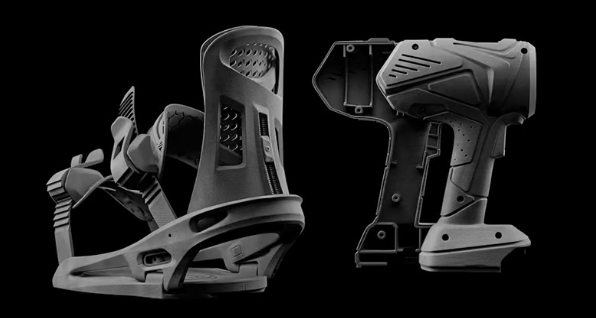The Revolutionary World of 3D Printing with Nylon: A Comprehensive Guide
In today’s fast-paced world, the demand for innovative and sustainable manufacturing solutions continues to grow. As we strive for precision, flexibility, and cost-effectiveness in production, 3D printing has emerged as a game-changer in the industry. Among the various materials used in 3D printing, nylon has emerged as a robust and versatile choice, offering a wide range of benefits. In this comprehensive guide, we will delve into the world of 3D printed nylon parts, exploring its characteristics, advantages, and the best technologies for producing high-quality prints.
Nylon Characteristics
Nylon, also known as polyamide (PA) or nylon, is a type of synthetic polymer. Its unique properties make it an ideal material for a variety of applications, including industrial, medical, and consumer products. Some of the key characteristics of nylon include:
- Sustainability: Nylon is made from synthetic polymers extracted from fossil fuels, making it a less environmentally friendly option compared to some other materials.
- Flexibility: Nylon is known for its high flexibility, which allows it to be easily molded and shaped.
- Chemical resistance: Nylon exhibits excellent resistance to chemicals and corrosive substances.
- Impact resistance: Nylon is relatively resistant to impacts and scratches.
- Light hygroscopy (easy to stain): Nylon is prone to staining and water absorption.
- Sun-resistance: Nylon is resistant to UV light and requires minimal maintenance.
- High melting point: Nylon has a high melting point, making it suitable for high-temperature applications.
- Wear: Nylon is known for its wear-resistant properties.
- Lighter than metal: Nylon is a lighter alternative to metal materials.
- Electric insulation: Nylon is a good electrical insulator.
Best 3D Printing Technologies for Nylon
When it comes to 3D printing, several technologies can be used to produce high-quality nylon parts. The top three options are:
- Selective Laser Sintering (SLS): SLS is a popular 3D printing technology that uses a laser to fuse together powdered nylon, creating a solid part. SLS is ideal for producing functional parts, such as tools, jigs, and fixtures.
- Fused Deposition Modeling (FDM): FDM is a more accessible and affordable 3D printing technology that uses melted plastic to create parts. While not as precise as SLS, FDM is suitable for prototyping, model making, and functional parts.
- Multi-Jet Fusion (MJF): MJF is a relatively new 3D printing technology that uses inkjet printheads to deposit a combination of fusing and detailing agents onto a build platform. MJF is ideal for producing high-quality, detailed parts with precise features.
Nylon Powder for SLS Printing
For SLS printing, nylon powder is the most common material used. There are several types of nylon powder available, with different properties and applications. The most common types are PA 11 and PA 12. PA 11 is suitable for components requiring UV and impact resistance, while PA 12 is ideal for enhancing the strength and rigidity of components.
FDM Nylon
FDM nylon is also available, albeit with some limitations. The most common type is PA 6 and PA 66, which have standard nylon characteristics, including resistance, wear resistance, and low friction coefficient. However, they are prone to hygroscopicity, requiring proper storage.
MJF Nylon
MJF nylon is a more recent development, allowing for the production of high-quality, detailed parts with precise features. The technology uses a combination of fusing and detailing agents to create parts with excellent surface finish and accuracy.
Conclusion
Nylon is a versatile material with a range of benefits, making it an ideal choice for 3D printing. By understanding the characteristics, advantages, and best 3D printing technologies for nylon, professionals can unlock the full potential of this innovative material. Whether you’re looking to create functional parts, prototypes, or production-ready components, nylon is an excellent choice.
Call to Action
At Mohou.com, we offer a range of 3D printed nylon materials, including SLS and HP nylon. Our experienced team can help you navigate the world of 3D printing with nylon, ensuring you achieve the best results for your project. Contact us today to learn more about our services and how we can assist you in your 3D printing journey.

















